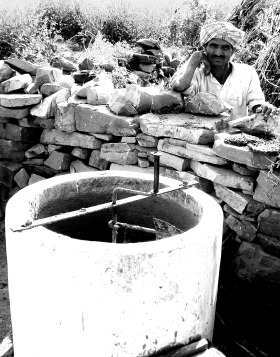WASHINGTON (AP) -- The world pumped up its pollution of the chief man-made global warming gas last year, setting a course that could push beyond leading scientists' projected worst-case scenario, international researchers said Thursday.

A thick haze covers Jakarta, Indonesia, where carbon dioxide emissions are rising rapidly.
The new numbers, called "scary" by some, were a surprise because scientists thought an economic downturn would slow energy use. Instead, carbon dioxide output jumped 3 percent from 2006 to 2007.
That's an amount that exceeds the most dire outlook for emissions from burning coal and oil and related activities as projected by a Nobel Prize-winning group of international scientists in 2007.
Meanwhile, forests and oceans, which suck up carbon dioxide, are doing so at lower rates than in the 20th century, scientists said. If those trends continue, they put the world on track for the highest predicted rises in temperature and sea level.
The pollution leader was China, followed by the United States, which data show is the leader in emissions per person in carbon dioxide output. And although several developed countries slightly cut their CO2 output in 2007, the United States churned out more.
Still, it was large increases in China, India and other developing countries that spurred the growth of carbon dioxide pollution to a record high of 9.34 billion tons of carbon (8.47 billion metric tons). Figures released by science agencies in the United States, Great Britain and Australia show that China's added emissions accounted for more than half of the worldwide increase. China passed the United States as the No. 1 carbon dioxide polluter in 2006.
Emissions in the United States rose nearly 2 percent in 2007 after declining the previous year. The U.S. produced 1.75 billion tons of carbon (1.58 billion metric tons).
Don't Miss
"Things are happening very, very fast," said Corinne Le Quere, professor of environmental sciences at the University of East Anglia and the British Antarctic Survey. "It's scary."
Gregg Marland, a senior staff scientist at the U.S. Department of Energy's Oak Ridge National Laboratory, said he was surprised at the results, because he thought world emissions would drop because of the economic downturn. That didn't happen.
"If we're going to do something [about reducing emissions], it's got to be different than what we're doing," he said.
The emissions numbers are based on data from oil giant BP PLC, which show that China has become the major driver of world trends. China emitted 2 billion tons of carbon (1.8 billion metric tons) last year, up 7.5 percent from the previous year.
"We're shipping jobs offshore from the U.S., but we're also shipping carbon dioxide emissions with them," Marland said. "China is making fertilizer and cement and steel, and all of those are heavy energy-intensive industries."
Developing countries not asked to reduce greenhouse gases by the 1997 Kyoto treaty -- China and India are among them -- now account for 53 percent of carbon dioxide pollution. That group of nations surpassed industrialized ones in carbon dioxide emissions in 2005, a new analysis of older figures shows.
India is in position to beat Russia for the No. 3 carbon dioxide polluter, Marland said. Indonesian levels are increasing rapidly.
Denmark's emissions dropped 8 percent. The United Kingdom and Germany reduced carbon dioxide pollution by 3 percent, while France and Australia cut it by 2 percent.
Nature can't keep up with the carbon dioxide from man, Le Quere said. She said that from 1955 to 2000, the forests and oceans absorbed about 57 percent of the excess carbon dioxide, but now it's 54 percent.
What is "kind of scary" is that the worldwide emissions growth is beyond the highest growth in fossil fuel predicted just two years ago by the Intergovernmental Panel on Climate Change, said Ben Santer, an atmospheric scientist at the Lawrence Livermore National Lab.
Under the panel's scenario then, temperatures would increase by 4 to 11 degrees Fahrenheit (2.4 to 6.3 degrees Celsius) by 2100.
If this trend continues for the century, "you'd have to be luckier than hell for it just to be bad, as opposed to catastrophic," said Stanford University climate scientist Stephen Schneider.















